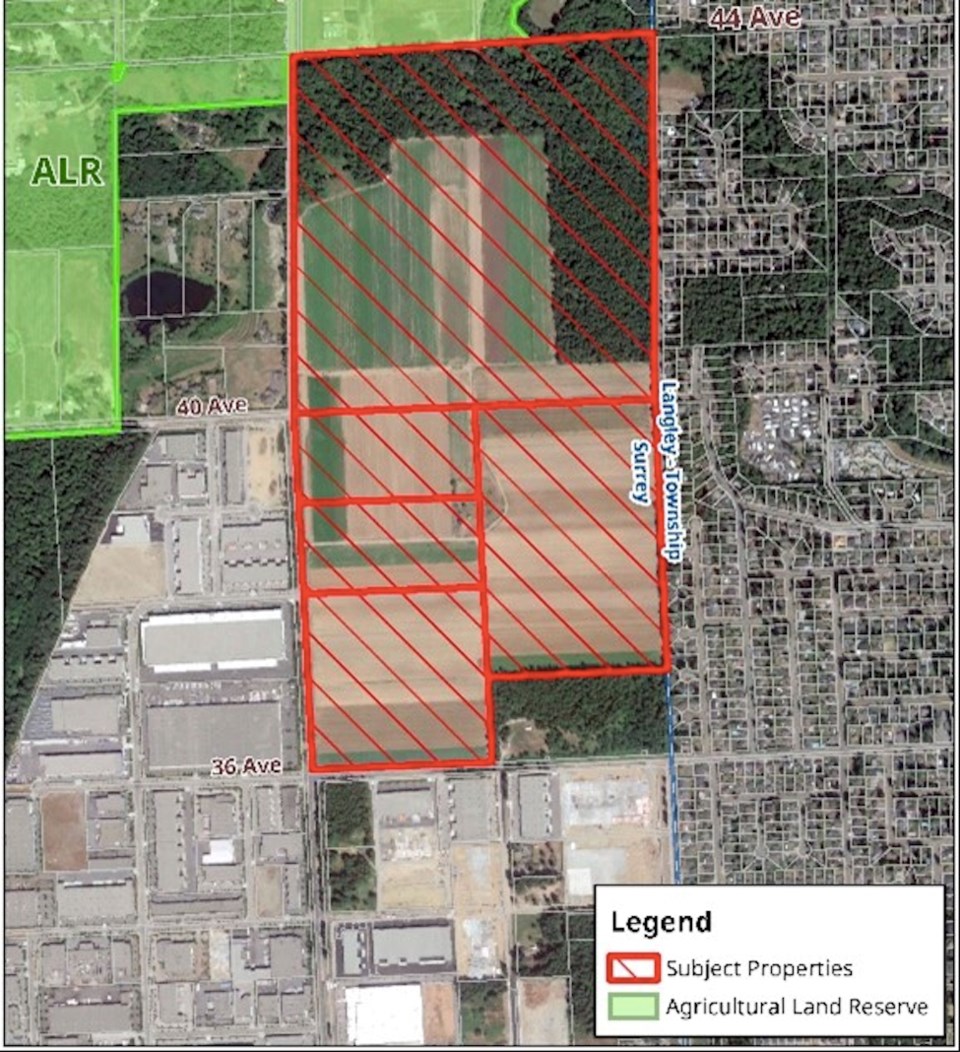The federal government has been put on official notice by the Katzie, Kwantlen and Semiahmoo First Nations regarding their interest in more than 300 acres of land in Surrey deemed surplus to federal needs.
Discussions regarding the lands, located north of 36 Avenue and east of 192 Street on Surrey’s border with Langley, have been ongoing for two decades but have intensified following a federal decision to sell the property in 2021.
A press conference on June 26 formally announced the intention to have the lands restored to the three nations, known to them from time immemorial as k'ʷeq'ənəq.
“This is not a new conversation for us on our end,” Chief Harley Chappell of the Semiahmoo First Nation told Western Investor. “There is competing interests … so we really needed to make a statement that the nations very much want these lands returned back to the three nations, for whatever purposes we choose to use.”
Controlled by Innovation, Science and Economic Development Canada, the property was declared surplus to federal needs in 2016. It has been farmed by Heppell’s Potato Corp., one of BC’s largest potato growers, since 1974 under long-term leases. The lease arrangement was shifted to year-to-year in 2021 with the lands’ declaration as surplus.
Heppell’s says the property is among the earliest in the province to be planted, displacing about 300 truckloads of imported produce a year. Good drainage gives it many advantages over other tracts in the Lower Mainland. This makes it critical to local food security, according to Heppell’s, which notes that the property yields 50 million servings of produce annually.
The importance of the property saw the Agricultural Land Commission initiate inclusion of the lands in the province’s Agricultural Land Reserve in fall 2022, but last week, on June 21, it decided that protecting the land was inconsistent with the province’s obligations under the Declaration on the Rights of Indigenous Peoples Act (2019).
Chappell said the June 26 press conference sent a signal that any discussion regarding the future of the lands will be between the federal government, the current owner, and First Nations, whose interest in Crown lands are reinforced by the United Nations Declaration on the Rights of Indigenous Peoples.
“This is a conversation between the three First Nations and the federal government, and we need to get to it,” he said. “We need to clarify with other organizations and entities here that this is the process that is happening, and there is no other process.”
A timeline for a federal decision on the future of the lands has not been set.
“We would love it as soon as possible,” Chappell said, but acknowledged that any transfer of title to the lands requires Treasury Board approval.
The designation of the lands for industrial development in Surrey's Official Community Plan and their strategic location in Campbell Heights North mark them for future industrial use, but Chappell said a vision has yet to be developed.
Plans for the lands will be drafted once title is clarified, though the First Nations have made clear that restoring the lands to them would be an act of “economic reconciliation” that lays the foundation for intergenerational wealth.
“The Nations see a critical opportunity to work collaboratively with other governments in pursuing prosperous and sustainable land use and management for the benefit of all,” a statement from the three First Nations says.
Commercial real estate association NAIOP Â鶹´«Ã½Ó³»strongly opposed the bid to include the lands in the ALR, noting the ongoing shortage of industrial land in the region.
“This is an important and compelling example of the future potential of strategically-located land being limited at a time when there is a critical shortage of industrial land in our region,” NAIOP executive director Paul Kool told the ALC in a January 2023 letter.
NAIOP declined comment on the recent decision to terminate the inclusion process, and the First Nations’ reiteration of their claim on the land.



